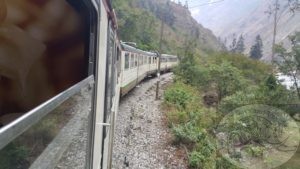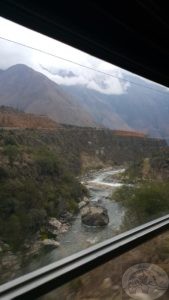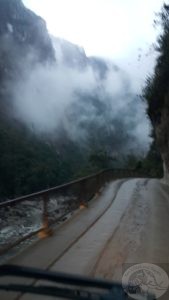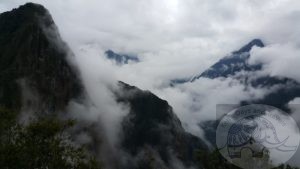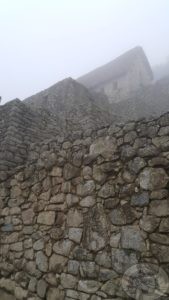Great train journeys
There are many options for getting to Machu Picchu, from self-drive to bicycling to taking a trek along the Inca Trail. The other option which many people choose is the train – either one-way or in both directions, from Ollantaytambo to Aguas Calientes. (There used to be service from a town closer to Cusco, but apparently that service has been suspended – likely due to the fact that Ollantaytambo is a major attraction which is located only 1.5hrs from Cusco by bus). Trains are fascinating, and anytime I have an opportunity to travel by train I will do so if I can afford it.
There are some wonderful train journeys in the world, and one of my plans for the trip to South America was to take the train not only in Peru, but also to take the Patagonia Express in Argentina – unfortunately this latter one I couldn’t afford, as a 6-day package tour through the region, including the train trip, would have cost around 1,600 dollars – perhaps on my next trip to south America… The Blue Train or Blauw Trein in South Africa offers another great journey, as does, apparently, the Rocky Mountaineer in Canada. One of the most enticing train trips still on my mind, however, is the trans-Siberian. With developments in South East Asia at the moment, it is now almost possible to travel from Singapore through different countries into China and onward to Siberia and then across Russia into Europe. A six-month journey, I am certain, but one that will be worth it.
The trip from Ollantaytambo to Aguas Calientes is offered by three different operators, and prices vary depending on level of luxury desired. Regardless, the one-and-a-half hour journey is magnificent as the train makes its way through some stunning scenery – tall mountains, snow-capped; rushing river, icy cold; small towns, rustic charm. It is not a long trip, but every turn offers a new vista and a new photo opportunity.
Departing late in the afternoon, I arrived at the station in Aguas Calientes around 6 pm and made my way to my hotel. The air was better here, as we had descended more than 1 kilometer from 3,390 metres above sea level in Cusco to 2,040 metres above sea level in Aguas Calientes. A quick dinner was arranged, then to bed, as the following morning’s wake-up call would be at 04.30.
Early morning mist(ery)
A shrill sound shocked me awake, and I sleepily scrambled to slap at whatever alarm clock was making the most horrendous shrieking sound in the world – not even the banshees would have sounded as bad – yet I could not find an alarm clock. I realized it was the telephone, and groggily I picked up the receiver, only to be met with another dangling bell followed by a melodious voice that was probably telling me that it was time to get up. Thanks. I dragged myself out of bed and eventually made it downstairs by the appointed time of 5 am. A light drizzle had set in, weather I had not counted on. A long line-up was already forming at the starting point for the buses taking passengers up to Machu Picchu. Tickets still had to be bought for our group, but by 05.30 we had joined the long snaking line, waiting patiently (more or less) in the drizzle for the buses to arrive. By 06.00 am the first loads of visitors were being taken up the mountain to Machu Picchu. The winding fog-enshrouded road did not afford us a view of the citadel above. Seated in the front passenger seat, I had a perfect view of what was ahead and above us, but all I could see was road, trees, and fog. Some more intrepid travelers were making their way up the mountain on foot, a trek of roughly 6 kilometres, and one I would not suggest for going up, as it is tiring (better to walk back down if you have the time). The twisting road took us higher and higher up the mountain, and in certain places the fog thinned enough to afford a view across the valley, but very little of what lay above. Making a final hair-pin turn, we entered a huge parking area where numerous other buses had already deposited their charges, who now stood mingling about either purchasing entrance tickets to Machu Picchu, or lining up at the entrance stiles.
15 years in the waiting
Now a UNESCO World Heritage site, Machu Picchu was likely built in the mid-to-late 1400s, but abandoned only a century later as a result of Spanish conquests. It is thought that the site was never discovered by the Spanish, as it was not destroyed and plundered, unlike other Inca cities throughout the region. Over the centuries, the jungle swallowed up the city, much as the jungles in South East Asia buried the temples at Angkor.
It was not until the mid-to-late 1800s (nearly 300 years after its abandonment), that the citadel was re-discovered. Subsequent trips in the early 1900s led to Machu Picchu gaining fame, and by 1981, the Peruvian Government declared Machu Picchu and its surrounding areas a Historic Sanctuary. Since mid-2017, new regulations have been implemented, limiting the number of visitors to the site to roughly 6,000 per day, with 3,500 allowed during the morning until noon, and a further 2,700 in the afternoon. It is best to plan ahead to avoid disappointment.
At 7 am the line started to move, and people set off in groups led by a tour leader. We passed through the turnstile, and walked out into the fog that enshrouded the ruins of what is South America’s most famous and most photographed archaeological site.


